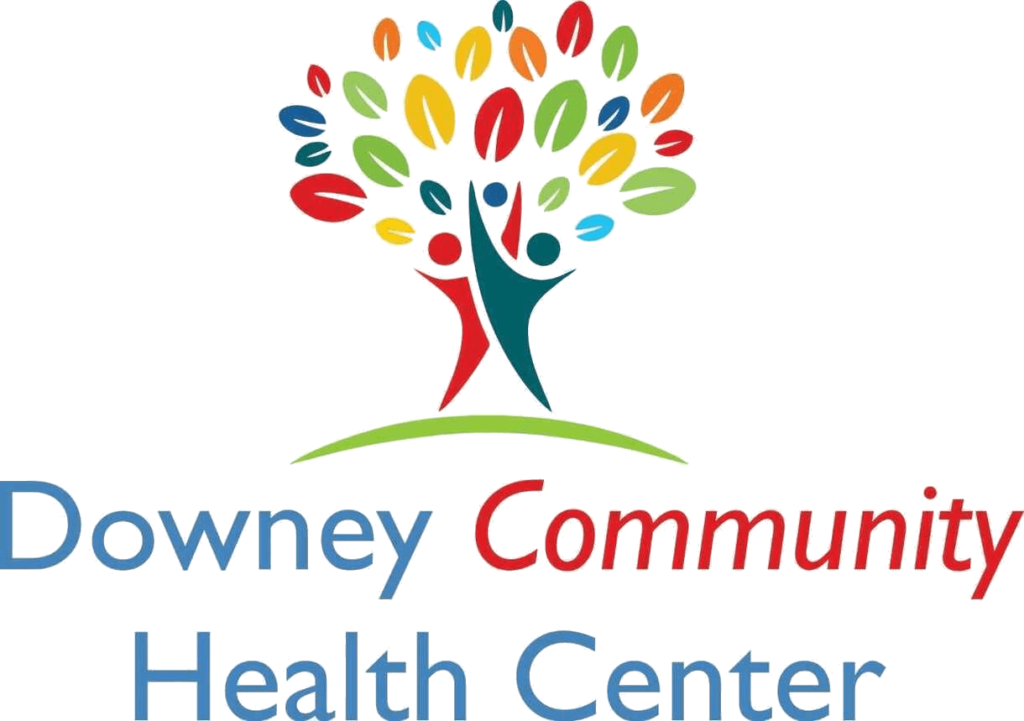When it comes to the spectrum of care available for the elderly, two popular options are assisted living and independent living.
Both living arrangements cater to seniors who seek a community environment with varying levels of independence and care. Understanding the nuances between the two is crucial for families as they navigate the decision-making process for their loved ones.
The importance of distinguishing between assisted living and independent living cannot be overstated. The right living arrangement can significantly impact a senior’s quality of life, their autonomy, and the kind of care and amenities they receive.
It’s key to match the level of services provided with the individual’s current and future needs to ensure a comfortable and supportive living experience.
Assisted Living VS Independent Living
Assisted Living: A Supportive Environment
Senior living refers to a residential option for seniors who require assistance with day-to-day activities, such as bathing, dressing, and medication management, but do not need the intensive medical and nursing care provided in a nursing home.
Senior living communities that offer assisted living provide a supportive environment with staff available 24/7 to help ensure residents’ safety and well-being. These communities often include meals, housekeeping, transportation, and social activities as part of their services to promote a high quality of life.
Independent Living: Maintaining Autonomy
On the other hand, an independent living community is designed for older adults who can still live independently but prefer to reside in a community setting where they can enjoy retirement without the burdens of home maintenance.
These communities offer various housing options such as apartments, townhouses, or single-family homes. Residents in independent living enjoy a wide range of amenities, including fitness centers, dining services, and recreational activities, all the while maintaining their autonomy and freedom to manage their daily lives as they see fit.
Lifestyle and Services Offered
An assisted living community is specifically designed to cater to the needs of residents who may require assistance with various daily activities.
These activities encompass not only bathing, dressing, and medication management but also include other essential tasks that contribute to their overall well-being.
In addition to personalized care and medical services, a senior living community ensures a comfortable and enriching environment by offering amenities such as meal services, housekeeping, transportation, and a wide range of social programs.
Independent Living Communities, on the other hand, are perfectly tailored to meet the daily living needs of seniors who desire a lifestyle that promotes autonomy and active engagement in their daily lives.
Most independent living communities go beyond offering minimal assistance and prioritize empowering residents to maintain their independence.
With an array of amenities like state-of-the-art fitness centers, spacious clubhouses, meticulously planned social activities, and maintenance-free living, an independent senior living community provides a perfect platform for retirees to enjoy their well-deserved retirement with utmost comfort, leisure, and fulfillment.
Level of Care and Assistance
Within the spectrum of eldercare options, the level of care and assistance varies significantly between various living arrangements. Therefore, if you’re considering independent or assisted living, you should explore all the options
Assisted Living: Personalized Support
Assisted living residents are individuals who require assistance with daily activities such as bathing, dressing, and medication management.
Personalized support is delivered by trained staff members in a residential setting, allowing residents to maintain a degree of independence while receiving the care they need.
Independent Living: Minimal Assistance
Independent living communities offer options for seniors who can largely care for themselves but wish to live among peers in a community that provides certain conveniences and services.
These residences often include amenities like housekeeping, dining, and social activities, with minimal day-to-day assistance.
Both independent living and assisted living communities can be fantastic options depending on your needs. While some are looking for a retirement community to enjoy a part of their life in, others just want support for their daily activities.
Housing Options and Facilities
Assisted Living Residences provides tailored accommodations designed to offer support and care to those who need assistance with daily activities while still promoting independence. These facilities typically offer a spectrum of services such as meal preparation, medication management, and personal care support, within a community-oriented environment that encourages social engagement.
Independent Living Apartments, on the other hand, are self-contained spaces ideal for individuals who can handle day-to-day tasks on their own but enjoy the benefits of community living. These apartments enable residents to maintain a high degree of independence, often featuring full kitchens and private bathrooms, while also offering communal amenities like group activities, fitness centers, and dining halls.
Cost Considerations
Assisted Living Expenses: Understanding the Investment
Choosing assisted living entails a comprehensive understanding of the financial commitment involved. This living arrangement often includes housing, meals, medical care, and support for daily activities.
Potential residents and their families must consider monthly fees, potential entry fees, and the levels of care provided to accurately assess the long-term financial implications.
Independent Living Costs: Budgeting for Independence
Independent living, in contrast, allows for greater autonomy and typically involves fewer services bundled into the cost.
Residents of independent living communities often pay for their own housing, utilities, and meals, with some offering a la carte services.
Proper budgeting is essential to ensure that costs associated with independent living are sustainable over time, taking into account potential future healthcare needs and lifestyle preferences.
Eligibility and Admission Process
When considering the move to an assisted living facility, careful assessment of an individual’s needs and requirements is critical.
This often involves a health evaluation by a medical professional, who assesses the level of daily assistance needed with activities such as bathing, medication management, and mobility. Based on these assessments, facilities can tailor their services to match the resident’s specific needs, ensuring a comfortable and supportive living environment.
In contrast, independent living communities cater to those who seek a maintenance-free lifestyle but do not yet require regular assistance.
Here, the admission process focuses on providing residents with a wide range of choices, promoting autonomy and independence. Applicants often choose from various types of housing options and amenity packages, allowing them to lead an active lifestyle without the obligations of home upkeep.
Social Activities and Community Engagement
Social activities and community engagement are pivotal components of both assisted living and independent living facilities, playing a critical role in enhancing the residents’ quality of life.
Assisted Living: Cultivating a Supportive Community
Assisted living centers focus on creating a supportive community where residents can receive the care they need while also engaging in social activities that foster companionship and a sense of belonging.
These activities may include group exercise classes, art workshops, or social outings, all designed to encourage interaction and prevent feelings of isolation.
Independent Living: Fostering Social Connections
For those in independent living communities, pursuing an active social life is instrumental in maintaining a healthy, happy lifestyle.
These communities often provide a diverse range of activities, such as gardening clubs, book discussions, and dance nights, which promote continued social engagement and enable residents to develop meaningful connections with their peers.
Health and Wellness Programs
Health and wellness programs within assisted and independent living communities are tailored to meet the varying needs of their residents.
Assisted Living: Prioritizing Health Management
In assisted living settings, the emphasis is on managing the health of residents through meticulous support and medical oversight.
Typical services might include medication management, assistance with daily activities, and access to on-site healthcare professionals.
These interventions are crucial for residents who may not be fully independent due to physical or cognitive limitations.
Independent Living: Encouraging Active Aging
For individuals in independent living communities, the focus is on promoting an active and engaged lifestyle.
Health and wellness programs here are designed to encourage self-reliance, with activities geared towards maintaining physical fitness, mental acuity, and social connections.
The objective is to provide residents with the necessary resources to lead a robust and autonomous life for as long as possible.
Transportation and Mobility Assistance
In an assisted living setting, transportation services play a critical role in maintaining residents’ connection to the larger community.
These services provide the means for residents to attend medical appointments, participate in social outings, and run errands, thus contributing to their overall well-being.
Facilities often offer scheduled transportation to common destinations and personalized trips to ensure that individual needs are met, all while ensuring safety and comfort for their residents.
For those in independent living situations, supporting mobility and independence is pivotal. Whether through public transportation, ride-sharing services, community shuttles, or even mobility aids like walkers and wheelchairs, the goal is to enable individuals to move freely and maintain their autonomy.
Access to reliable and convenient transportation options empowers them to engage in their usual activities without having to rely on others, preserving their sense of independence.
Safety and Security Measures
In the realm of assisted living, ensuring resident safety is paramount. Facilities implement a variety of measures such as 24-hour surveillance, emergency call systems in each resident’s living space, and regular safety drills.
Teams of trained healthcare professionals are also at hand to offer assistance and medical care as needed. These precautions not only safeguard the well-being of the residents but also provide families with the assurance that their loved ones are in a secure environment.
Contrastingly, in independent living settings, providing peace of mind revolves around creating a secure foundation where residents maintain autonomy while having access to support services if required.
Security measures in these communities often include controlled access, well-lit pathways, and personal emergency response devices.
These communities strike a balance between independence and availability of help, ensuring residents have the confidence to enjoy their daily lives with the knowledge that support is accessible whenever necessary.
Flexibility of Care Services
In the continuum of eldercare, the flexibility of care services significantly contributes to the well-being and satisfaction of its residents.
Assisted Living: Adapting to Changing Needs
Assisted living facilities masterfully adapt to the evolving needs of their residents, providing a tailored care approach that can escalate or de-escalate services as health conditions change.
This dynamic system offers peace of mind for residents and their families, knowing that appropriate care levels and support will adjust according to the individual’s requirements.
Independent Living: Flexibility in Care Options
Independent living communities, while promoting autonomy, also offer flexible care options to cater to the varied needs of their residents.
These communities typically provide an a la carte menu of services—from housekeeping to meal plans to transportation—ensuring residents have the freedom to choose the services that best fit their lifestyle and can modify their selections over time as their needs evolve.
Resident Rights and Responsibilities
Assisted Living: Understanding Resident Rights
Residents of assisted living facilities are entitled to a series of rights designed to protect their dignity, autonomy, and quality of life. These rights include but are not limited to, privacy, security, and access to medical care.
Recognizing the inherent value and worth of each individual, assisted living communities strive to foster an environment that maintains personal respect while providing necessary support.
Independent Living: Emphasizing Personal Responsibility
In contrast, independent living focuses on empowering residents to take charge of their day-to-day lives.
Emphasizing personal responsibility, these communities encourage seniors to manage their own affairs to the greatest extent possible, while still offering convenient access to amenities and social activities.
This model promotes independence, with the understanding that each resident is the primary agent in shaping their own lifestyle choices.
Family and Caregiver Involvement
Assisted Living: Collaboration with Families
In assisted living environments, family and caregiver involvement is crucial to the well-being and support of residents.
Collaboration with families means keeping open lines of communication, and ensuring that loved ones are an integral part of care planning and decision-making processes.
This cooperative approach can include regular updates on the resident’s health, participating in care plan meetings, and providing families with access to resources and support systems that facilitate informed and compassionate care.
Independent Living: Empowering Resident Independence
For those in independent living situations, the emphasis shifts to empowering residents to maintain their independence while still providing access to support when needed.
Here, the role of families and caregivers is to encourage self-sufficiency while being prepared to step in with assistance or advice when called upon.
This balance helps residents feel confident and secure in managing their daily lives, knowing they can rely on a support network without compromising their autonomy.
Summary: Key Differences and Considerations
In conclusion, when evaluating key differences between the two subjects, one must recognize the unique advantages and challenges each presents.
The stark contrasts become evident when we measure the immediate tangible benefits of physical activities against the long-term intellectual enrichment provided by educational technology.
While the former emphasizes a direct enhancement of health and well-being, the latter underpins the cumulative advancement of knowledge and skills.
It’s crucial to weigh these differences mindfully, letting specific goals and contexts guide decision-making.
Whether one should focus more on physical activities or leverage educational technology hinges on individual objectives, be they immediate health improvements or the pursuit of lifelong learning and connectivity. As we navigate through these choices, a balanced approach can often yield the most holistic benefits.







